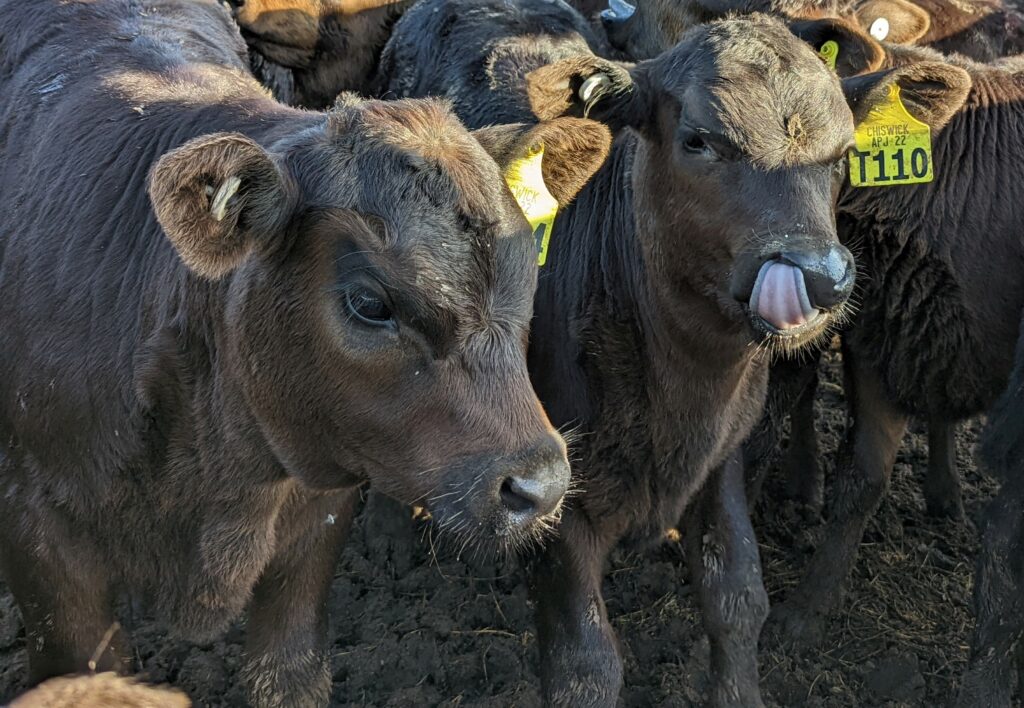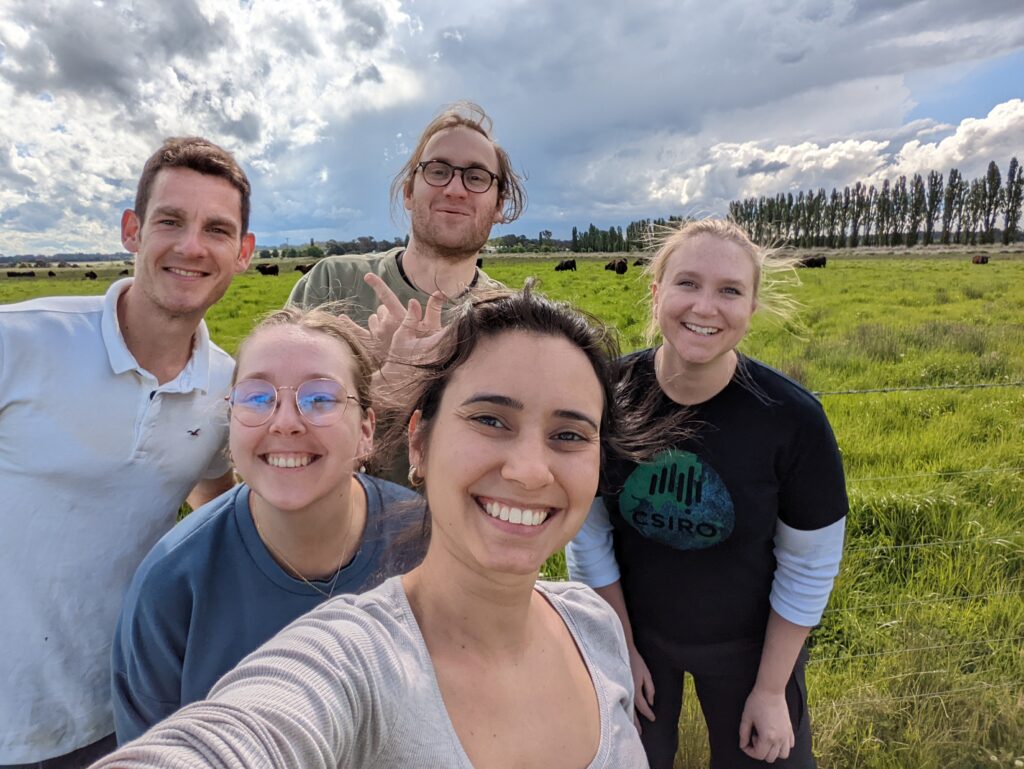Cattle production microbiome
Understanding the cattle microbiome to promote happier, healthy cows that require less antibiotic and chemicals.
The economic and welfare costs of disease in cattle

MOSH researchers will study the microbiome of calves in Armidale, NSW.
Cattle disease presents a significant issue to Australian farmers and costs the Australian red meat sector around $2 billion per year. Cattle entering feedlots are exposed to a range of diseases for the first time and bovine respiratory disease, which costs the industry an estimated $40 million annually, is the most common disease cattle encounter in Australian feedlots. Cattle are also exposed to diseases outside of the feedlot in other part of the production cycle such as pink eye and pest-transmitted diseases while grazing in paddocks. Vaccinations have only had limited success in preventing the spread of disease and therefore, disease can cause significant animal welfare issues.
Consumers are increasingly aware of the health and welfare of the animals that produce their food and are concerned with the use of antibiotics to prevent and treat disease in production animals. Maintaining consumer confidence is critical to the future of the livestock industries.
Immune competency and cattle health
CSIRO has been researching immune competency (IC) in cattle to improve cattle health and resilience. IC is the animal’s ability to respond to a pathogen. Methods have been developed to measure immune competency in cattle. Cattle with the high IC were shown to have less incidences of disease and less mortality than the low IC phenotype. Furthermore, there was a reduction in health-related costs with the high IC cattle (AUS$4 per head) compared to the low IC (AUS$103 per head) group for the feedlot operator (full study can be found here).
However, IC genetic testing showed that the heritability of this trait is relatively low suggesting an important influence of the environment. Therefore, other factors such as the microbiome, which is shaped by the environment, could play a significant role in determining the IC phenotype. Improvements in immune competency and general health can result in broader benefits to cattle welfare by increased ability to cope with stress and other illnesses such as pink eye.
CSIRO’s research will focus on:
- Microbiome. How the microbiome changes across the production boundaries where there is a change in diet, new stresses encountered and exposure to different disease pathogens. These factors can all alter the host microbiome. Animals will be analysed over several production boundaries including marking, weaning and entering the feedlot, with the study spanning approximately two years.
- Host. The immune response of the host and its interaction with the microbiome as the host faces new stresses and disease. This will incorporate cattle with different IC phenotypes and a range of other performance-related traits.
- Integrating both host and microbiome. This will investigate the host and all the microbes that live around or in the host, together forming a single ecological system. It will address major knowledge gaps around the relationship between host genetics, host health and microbiome profile (including eye, nose, saliva, milk and faeces) leading to innovative insights and solutions to influence the diversity and composition of beneficial microbial communities.
The use of multi-omic techniques to understand host-microbiome interactions throughout the production cycle will provide the knowledge for a number of key applications. These applications may include early life intervention to promote healthy and stable microbiomes, adjusting the microbiome prior important stressful events such as the production boundaries and improving breeding selection program using both genotype and microbiome data, that results in happier, healthier cows that require less antibiotics.
The animal production team
Dr Pamela Alexandre Research scientist
Annaleise Wilson Postdoctoral fellow
Thibault Legrand Postdoctoral fellow
Dr Stuart Denman Research scientist
Dr Ryan Farr Research scientist
Dr Toni Reverter-Gomez Senior principal research scientist
Dr James Broadbent Research scientist
Aaron Ingham Group leader
Brad Hine Senior research scientist
Dr Cameron Stewart Team leader

MOSH researchers in Armidale, NSW, for spring sample collection.
References
Associations between immune competence phenotype and feedlot health and productivity in Angus cattle
